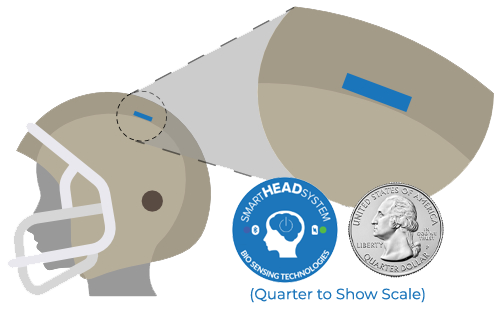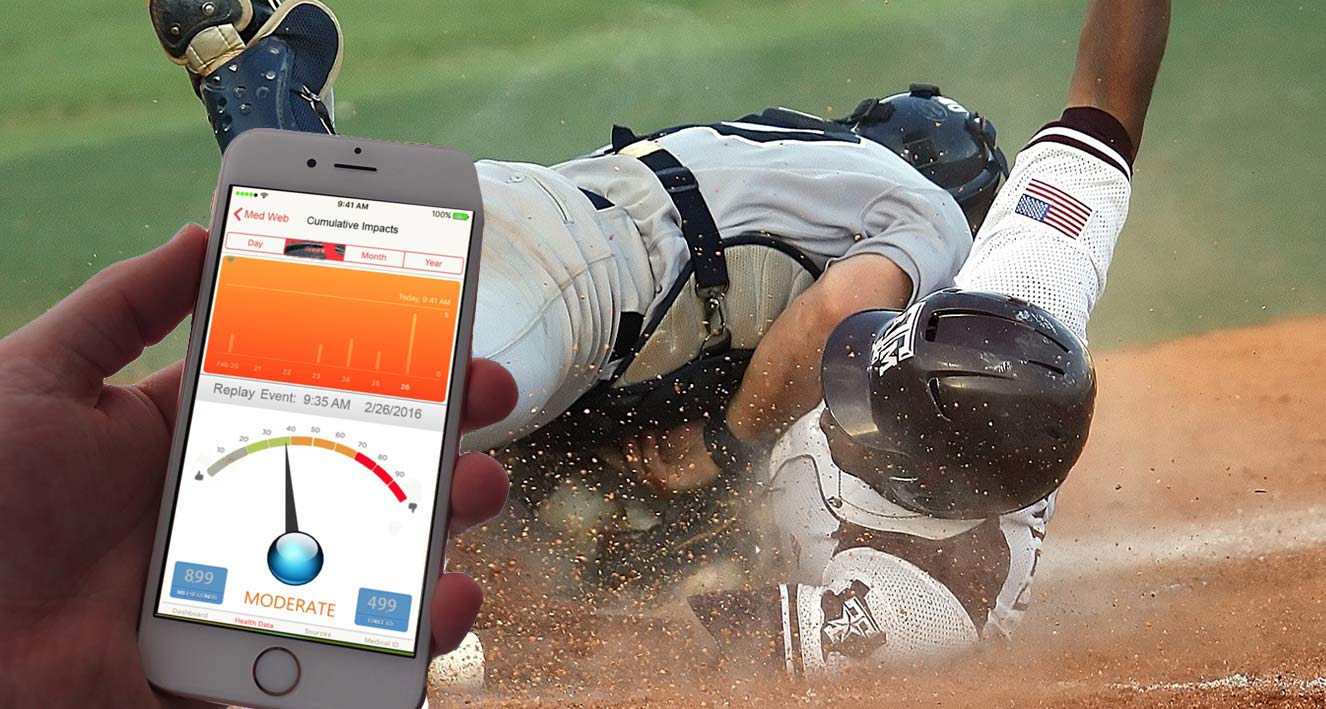In recent years, the advancement of technology has made its way into every corner of our lives, including the sports and cycling industry. One of the most revolutionary innovations in safety gear is the helmet impact sensor. This small but powerful device is designed to enhance head protection by detecting and monitoring impacts, providing real-time feedback to the wearer and emergency responders in the event of a serious collision or fall. In this blog, we’ll explore how helmet impact sensors work, their benefits, and why they are crucial for athletes and cyclists.
What is a Helmet Impact Sensor?
A helmet impact sensor is a device integrated into a helmet that detects and records the forces exerted on the helmet during a collision or fall. These sensors use accelerometers and gyroscopes to measure the acceleration, velocity, and angle of impact. When a significant force is detected—such as during a crash or hard fall—the sensor activates and sends data to a paired smartphone app or an emergency contact system. This data can help determine the severity of the impact and whether medical assistance is needed.
How Helmet Impact Sensors Work
Helmet impact sensors work by using a combination of hardware and software designed to monitor real-time motion. Typically, these sensors consist of the following components:
- Accelerometers: These measure linear acceleration and changes in velocity when the helmet experiences an impact. They can detect the magnitude and direction of the impact force.
- Gyroscopes: These measure rotational movement, which helps assess how the helmet is twisting or rotating during a fall or collision.
- Microcontroller: The brain of the sensor, the microcontroller processes the data gathered by the accelerometers and gyroscopes to determine the intensity and type of impact.
- Connectivity: Helmet impact sensors often feature Bluetooth or Wi-Fi capabilities to send data to a paired smartphone or alert emergency services if necessary.
Once a significant impact is detected, the sensor sends a signal to a connected mobile device or alert system, often notifying the user, their team, or emergency contacts about the potential injury.
Sensor fusion is only one of the features of the SMARTHEADSYSTEM™

We want to inform you about the biosensors we use! Try our proven SMARTHEADSYSTEM™ we know all too well that being in the know is key. Receive real-time, calculated bio-metrics with every impact. Just the size of a quarter it fits easily inside a helmet or head band. While we can’t prevent injury, we collect real-time data about your head and what is happening when you undergo jarring impacts, etc.
Why Are Helmet Impact Sensors Important?
The importance of helmet impact sensors cannot be overstated. Here are some key reasons why they are essential for safety:
1. Preventing Long-Term Brain Injuries
One of the leading causes of serious head injuries in sports like football, cycling, and skiing is repeated impacts to the head. Concussions, which are a type of traumatic brain injury, can have long-term effects, including cognitive impairment, mood disorders, and chronic traumatic encephalopathy (CTE). By monitoring the severity of each impact, helmet impact sensors can provide early warnings and help individuals make more informed decisions about their health, potentially reducing the risk of long-term brain damage.
2. Real-Time Alerts and Data
A helmet impact sensor can provide real-time data on the severity of an impact, allowing athletes, coaches, or parents to make immediate decisions. If a player suffers a blow to the head, the sensor’s data can indicate whether the impact was severe enough to warrant medical evaluation or if it’s safe to continue. In the case of cyclists, especially those who ride in remote areas, the sensor can send alerts to family members or emergency services in case of an accident, enabling quicker responses.
3. Improved Safety for Kids and Teens
Children and teens are particularly vulnerable to head injuries due to the nature of their developing brains and their active involvement in sports. Helmets with impact sensors offer an added layer of protection, helping parents and coaches ensure that young athletes are properly monitored during sports activities. The data collected can also be useful for understanding how the child’s head is being impacted during regular training sessions.
4. Enhanced Training and Performance Analysis
For serious athletes, helmet impact sensors are also useful tools for training and performance analysis. By tracking the frequency, intensity, and type of impacts a player experiences, trainers can adjust training techniques to minimize the risk of injury. This data can also provide insights into the player’s biomechanics, helping to refine their technique and improve overall performance.
Benefits of Helmet Impact Sensors in Different Sports
Cycling
Cyclists, especially those who race or ride at high speeds, face a significant risk of head injury in the event of a fall or crash. Helmet impact sensors can alert the rider or emergency contacts immediately after a crash, providing vital information to paramedics and medical staff. Sensors can even differentiate between minor bumps and serious impacts, which is especially helpful in determining whether the rider should continue cycling or seek medical attention.
Football and Rugby
In contact sports like football and rugby, players are constantly exposed to violent collisions. A helmet impact sensor can record the forces of these impacts, allowing coaches and medical staff to monitor players for signs of concussion or other brain injuries. This technology can help remove players from play if a dangerous impact occurs, reducing the risk of further injury.
Skiing and Snowboarding
For skiers and snowboarders, helmet impact sensors are particularly valuable in detecting falls on slopes, especially in remote areas where help may not be immediately available. In the event of a fall, the sensor can send data to a mobile app, allowing rescuers to locate the rider quickly.
Key Players in the Helmet Impact Sensor Market
Several companies and organizations are leading the charge in integrating helmet impact sensors into safety gear. Some of the top brands include:
- MIPS: Known for their innovative Multi-Directional Impact Protection System, MIPS integrates sensors into their helmets that can detect the severity of an impact and improve overall safety.
- CYCLEAWARE: CycleAware has developed a helmet impact sensor specifically designed for cyclists, which can be synced with a mobile app to send alerts after a crash.
- SkiTrax: This company provides helmets for skiers and snowboarders equipped with sensors that detect the severity of falls and relay important information to emergency services.
The Future of Helmet Impact Sensors
As technology continues to evolve, we can expect helmet impact sensors to become even more sophisticated. Future advancements may include:
- Smarter sensors: With AI and machine learning, future helmet impact sensors could be even more accurate in assessing the severity of impacts and predicting potential injuries before they occur.
- Integration with wearable technology: Helmet impact sensors may integrate with other wearable devices, such as smartwatches or fitness trackers, to provide a more holistic view of an athlete’s overall health and safety.
- Global communication networks: Sensors may be able to send alerts to a broader network of responders, including nearby athletes or even drone assistance for rapid location finding in remote areas.
Conclusion
Helmet impact sensors are a game-changer in the world of sports and cycling safety. By providing real-time data on impacts and helping to assess the severity of head injuries, these sensors play a crucial role in preventing long-term brain damage and improving overall safety. As helmet technology continues to evolve, we can expect these sensors to become a standard feature across a variety of sports and recreational activities. Whether you’re a professional athlete, a weekend cyclist, or a parent concerned about your child’s safety, helmet impact sensors offer an extra layer of protection that could make all the difference.
If you’re serious about safety, it’s time to upgrade your helmet to one equipped with an impact sensor.

